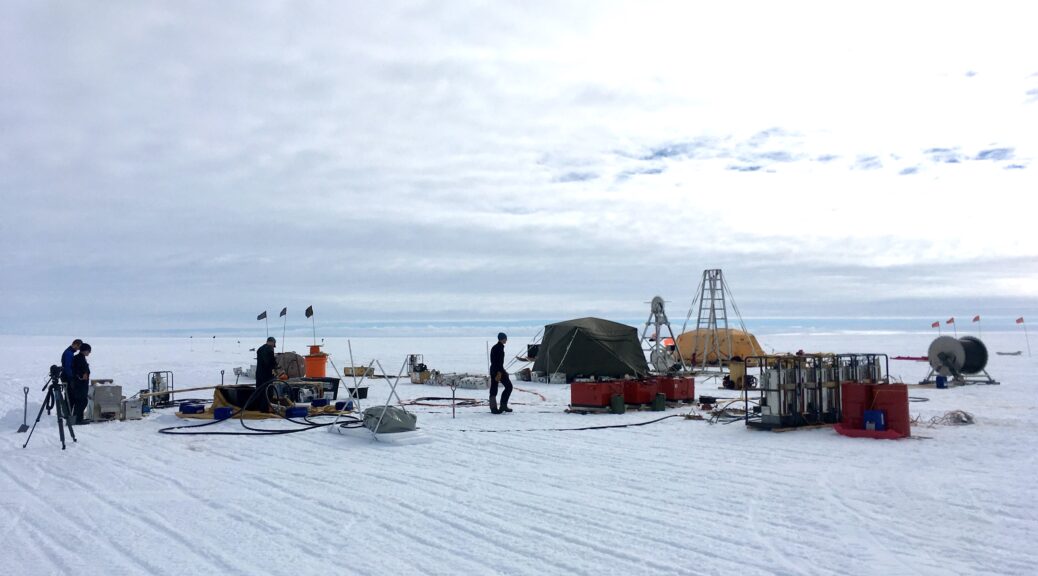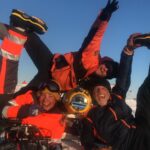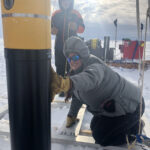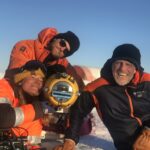In late 2019 and early 2020, the MELT team took Icefin beneath Thwaites Glacier (sometimes unfortunately referred to as the Doomsday Glacier). Thwaites is the size of the U.S. state of Florida (or about the size of Great Britain), and is one of the most rapidly changing glaciers on Antarctica. Using a 600 m borehole drilled through the ice by the British Antarctic Survey, members of the MELT team were able to deploy Icefin and other sensors beneath the glacier and maneuver it all the way up to the point where the underside of the ice first detaches from the seafloor, known as the grounding line – a point which was previously unseen, until Icefin. By doing this, the MELT team of scientists and engineers are uncovering critical information about the mechanisms that influence how fast this massive glacier is melting. The team chronicled their findings in two Nature papers, led by the Icefin team and the British Antarctic Survey (Schmidt et al. 2023 and Davis et al., 2023), and here’s what they found.
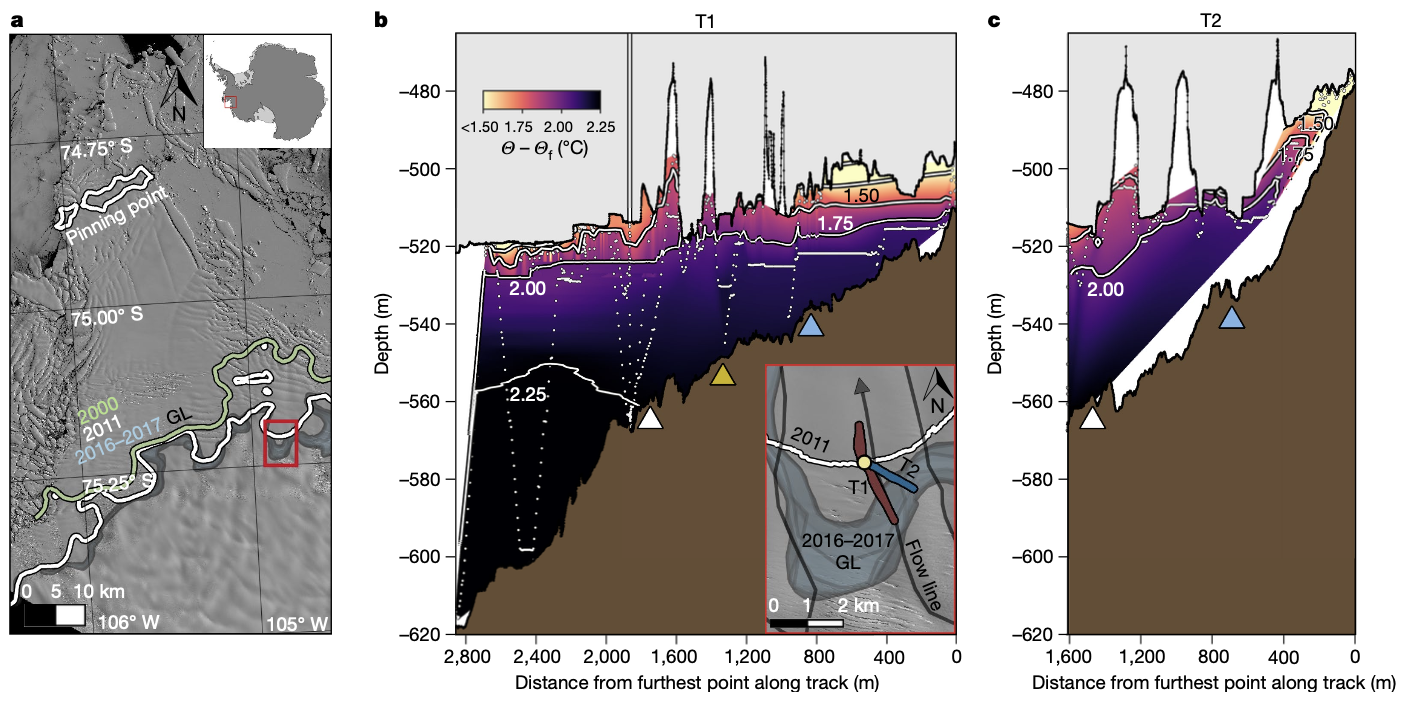
The Grounding Line
Figure 1 shows the ocean cavity beneath Thwaites Glacier, sampled with Icefin, leading up to the grounding line, which is the final contact point between the ice and seafloor before the ice goes afloat to form an ice shelf. All of the data in panels b & c come from Icefin sensors: the ice shape (gray) comes from Icefin’s altimeter, sea floor from sonar & DVL, temperature from our CTD.
The team found that the ocean was warmest and saltiest deep, near the seafloor, but cooled and freshened near the ice base due to melting (here the temperatures are given in thermal driving, which is temperature above the water’s freezing point at that depth). Colder ocean conditions were found very close to the grounding line. However, the ocean remained well above freezing throughout most of the ocean cavity, and therefore contained ample heat to melt the ice. The presence of such a warm ocean beneath Thwaites means that it is capable of melting the ice rapidly.
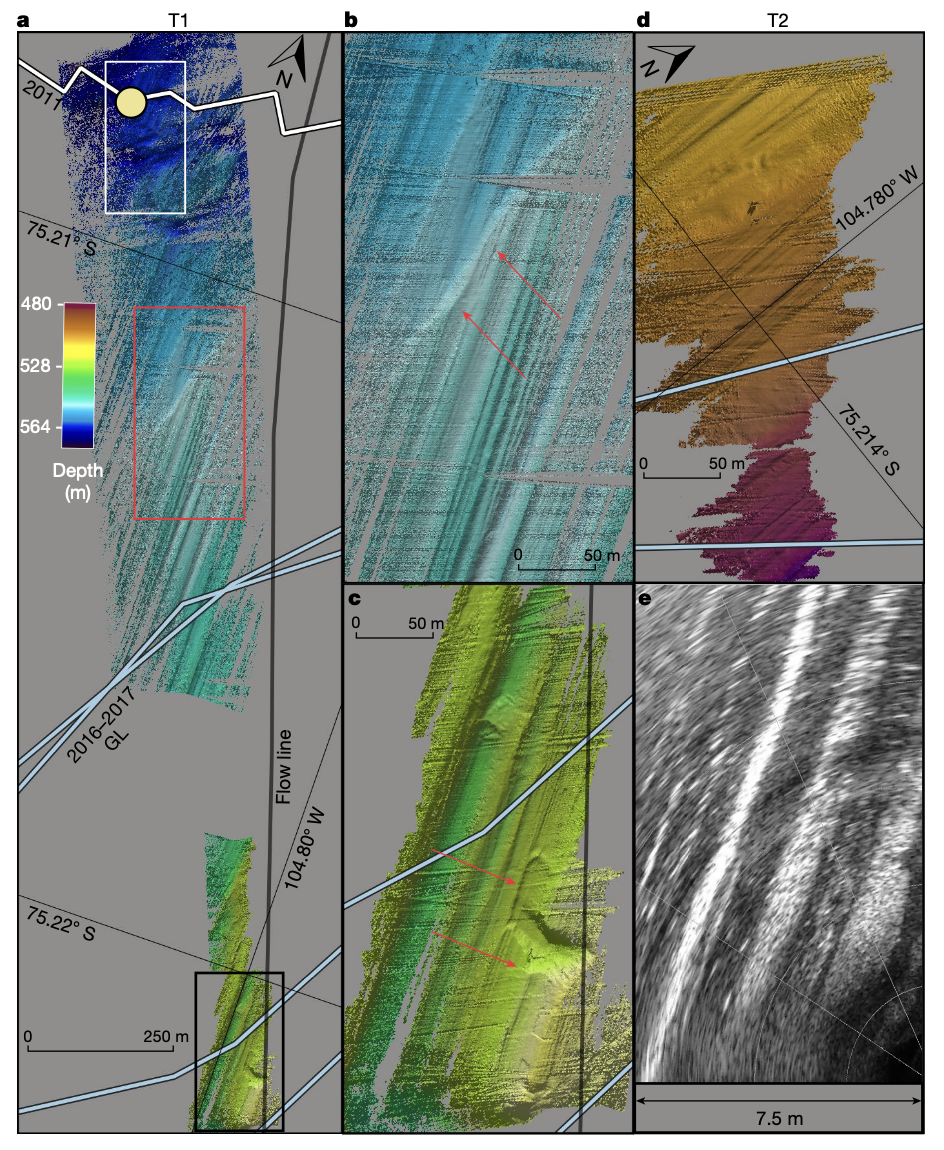
Grounding Line history left in the seafloor
Figure 2 shows features carved into the seafloor by the ice base of Thwaites Glacier as it flowed over it, when the ice was grounded further towards the ocean. The shape, size, and orientation of these features tells us the history of the region as the grounding line retreated across it. This data comes from our Norbit mapping sonar and Oculus Forward sonar.
The team found that the seafloor in the survey region contained ridges and troughs that were oriented in the direction that Thwaites Glacier flows. These ridges and troughs extended all the way to the grounding line, where their shape is mirrored by the ice base. A single wedge of sediment cut across these streaking features, from a time when the grounding line stuck in place, called a “grounding line wedge”. Except for this one occasion, there were no other grounding line wedges, meaning that the grounding line retreated steadily backwards across this region over the whole visible period (about the last 10 years). A possible gully was also present in the seafloor near the grounding line, where the team thinks that meltwater may have flowed out like a river from beneath the glacier upstream into the ocean.
Up close and personal with the ice
Figure 3 shows that the ocean conditions are highly variable right up to the underside of Thwaites Glacier. Various factors change depending on distance from the grounding line and whether below flat or steeply sloped ice. Here, data from the forward and upward cameras and the CTD and JFE Rinko Oxygen sensor show that melt water collects at the top of features in flat spaces, and very warm water melts steep slopes.
The team found that the ocean conditions and the amount of meltwater near the ice base changed depending on the shape of the ice base. Beneath steeply sloping parts of the ice the water remained warm and the ice contained scallop features from strong melting. Beneath flat parts of the ice the water was considerably cooler and fresher. The ice surface was featureless here, because the cold and fresh meltwater inhibited the warm ocean from melting the ice.
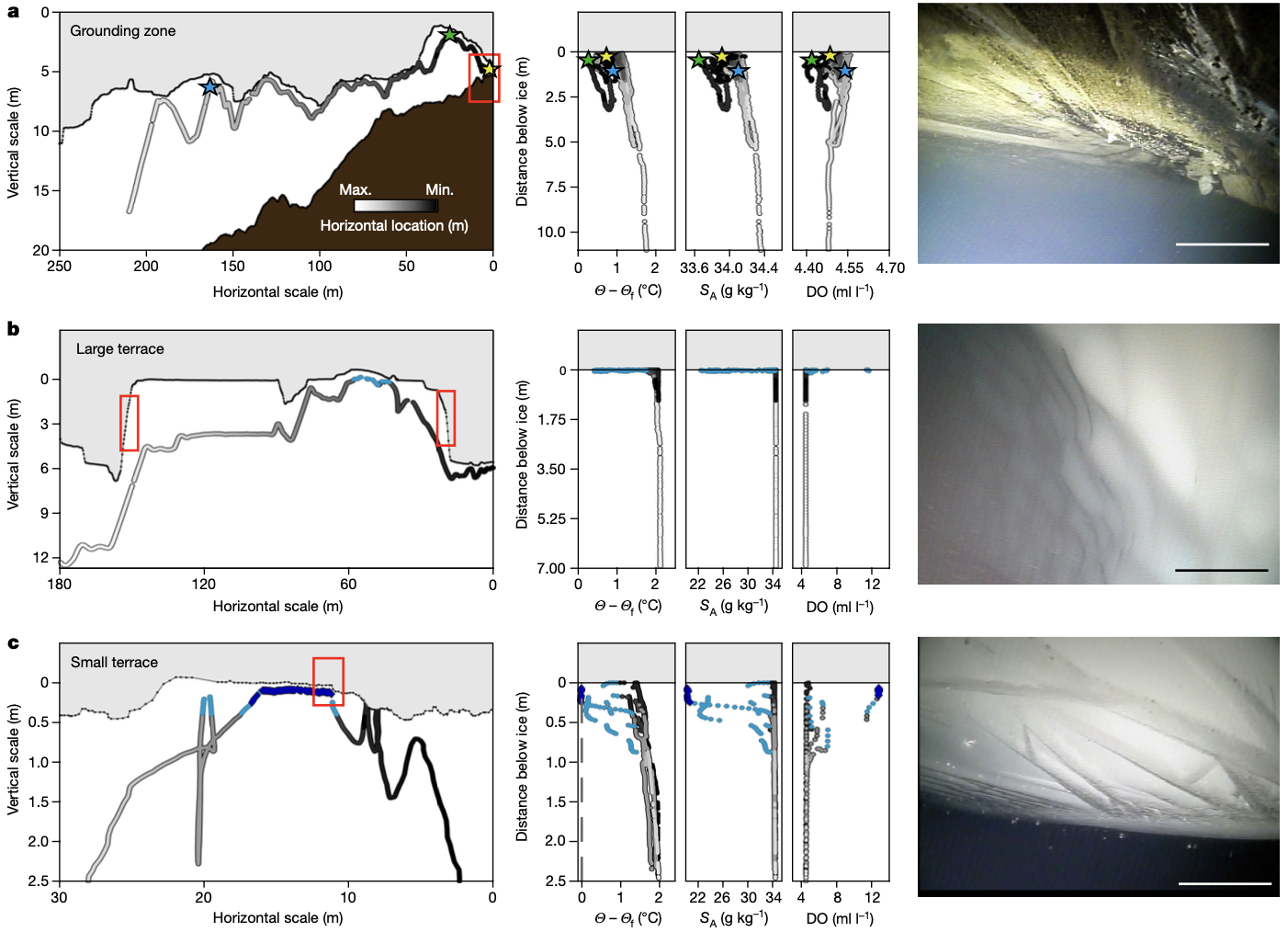
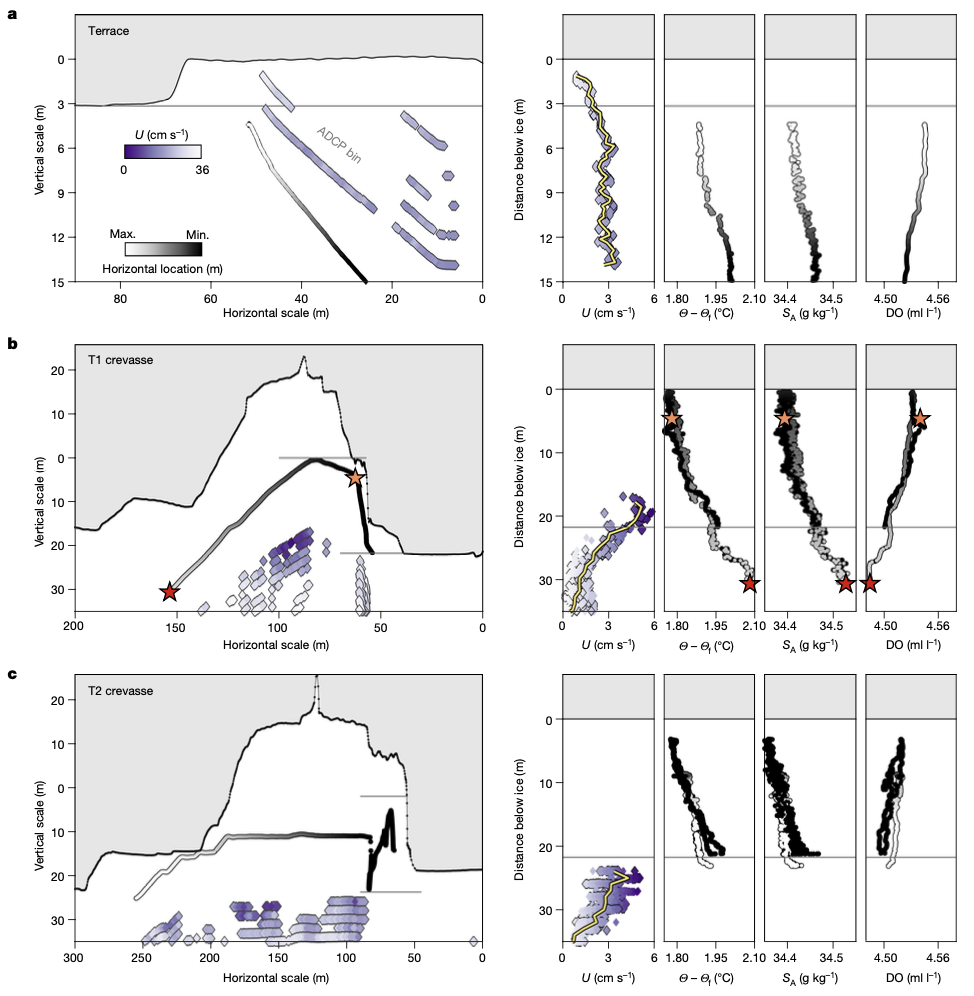
Ocean flow in crevasses and terraces
Figure 4 shows how fast the ocean flows close to the steep sides of terraces and crevasses.
The team found that ocean flow speeds increased in crevasses, which helped to mix heat and salt into their steep sides and melt them. The ocean flow decreased beneath the flat ice base, due to friction, which sheltered any terraces above it.
Not all melting is created equal
Figure 5 shows how different ocean conditions influence the way the underside of Thwaites Glacier melts. Various factors, which change depending on the distance from the grounding line, cause the ice to melt at different speeds.
The team found that, while in some areas along the base of the glacier the ice is melting slower than expected, in other areas like steeply sloped terrace walls and crevasses, the ice is melting much more quickly than previously known. This rapid melting in sloped areas of the underside of the glacier may contribute to the ongoing retreat and eventual collapse of Thwaites, which in turn will have a significant effect on sea level rise. In fact, warm waters in the crevasses are making these cracks wider, contributing to the eventual break up of the ice.
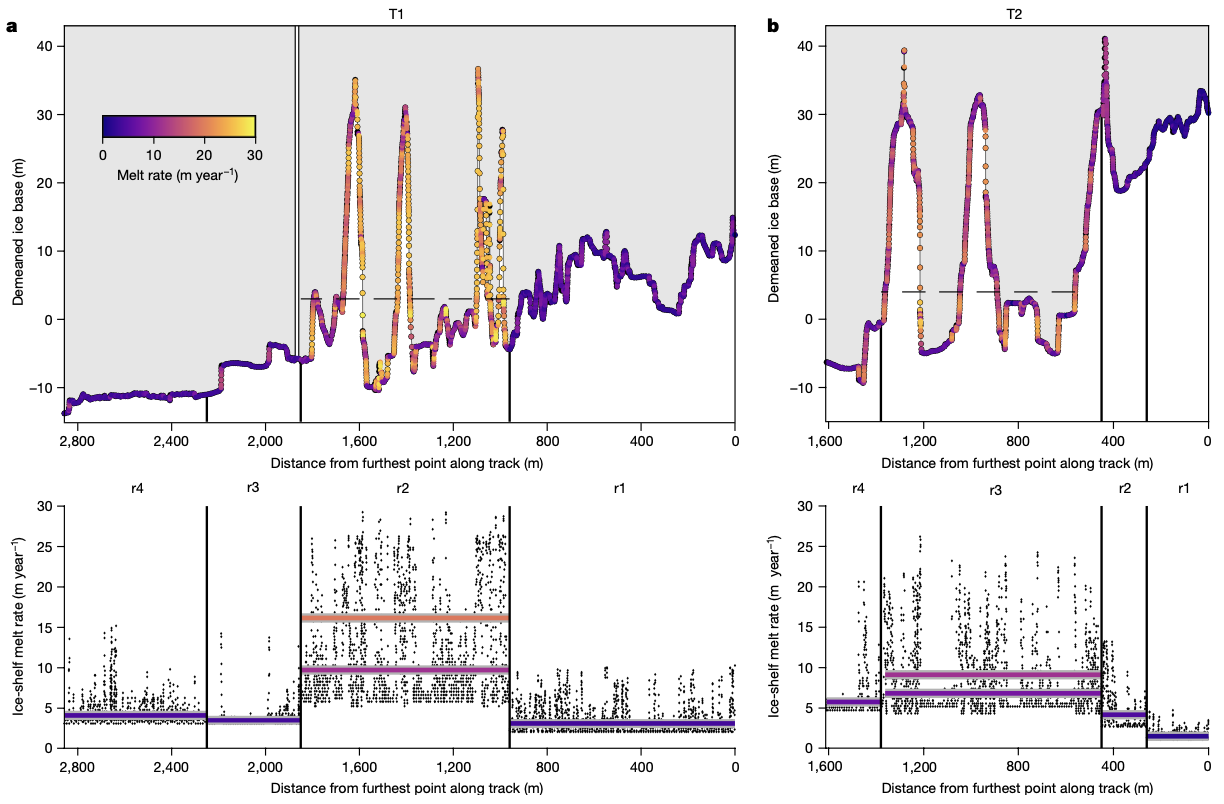
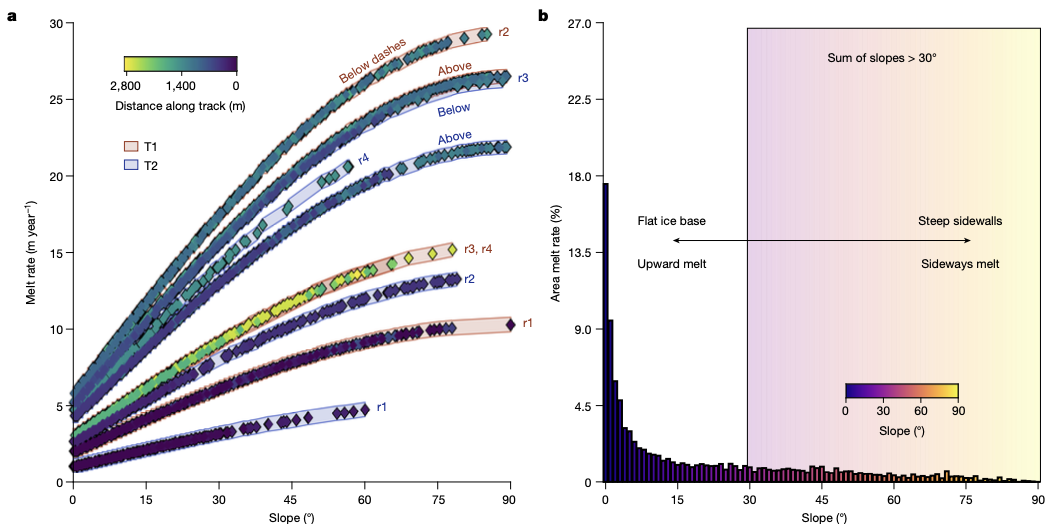
The slope-melt feedback
Figure 6 further shows how the ice melts at different speeds, depending on the slope of the ice, and how important this is to the overall melting of the glacier.
The team found that the melt rate increased with the sine of the ice base slope. This led to strong melting of 30 m yr-1 when the ice was vertical and melting of around 5 m yr-1 where the ice was completely flat. Overall, they found that 27% of the total melting occurred at slopes greater than 30°, despite this being a relatively small fraction of the total ice base (about 9%). This means that any part of the ice with a steep slope is very important to the overall melting of the ice.
More images of the ice base melting
This series of nine images in Extended Data Figure 8 from the paper shows examples of the strange topography and strongly asymmetric melting under Thwaites Glacier in Antarctica, photographed by Icefin.
The images from Icefin show conclusively that the ice base beneath different parts of the glacier melts in different manners. Scallop formations on terrace walls and sediment raining down from ice ridges show that stronger melting occurs here than the flat and featureless ice base. These fascinating images will stimulate further investigations into how the ice and ocean interact in Antarctica.
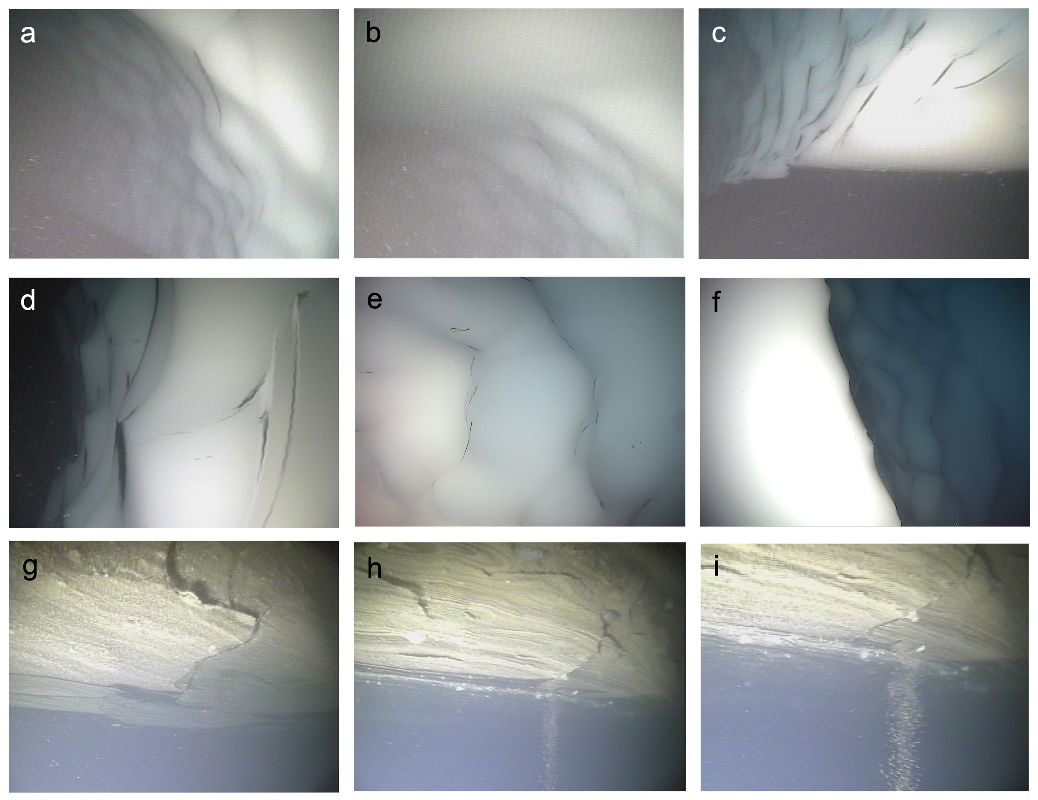
Thwaites MELT is a team effort!! Our colleagues at the British Antarctic Survey, led by Peter Davis, also published a companion paper about results from the oceanographic data and the mooring left behind at Thwaites. Please see this other paper here.
